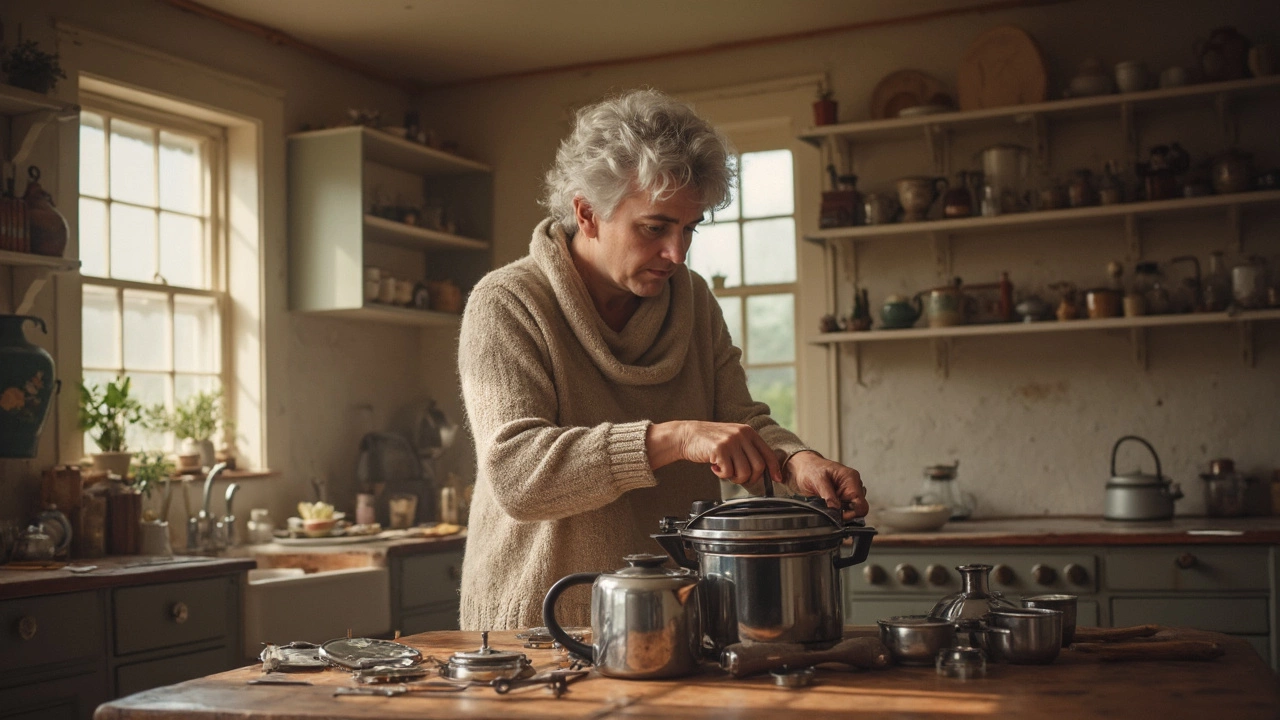Fixing Pressure Cookers: Quick Tips to Get Yours Working Again
If your pressure cooker isn’t humming like it should, you’re not alone. Most owners hit one of three roadblocks: the lid won’t seal, pressure won’t build, or the safety valve is stuck. The good news? Many of these issues can be solved at home with a few tools and a bit of caution.
Common Problems & Quick Fixes
1. Lid won’t seal. Check the rubber gasket for cracks, food debris, or hardening. Clean it with warm, soapy water and dry it thoroughly. If the gasket is brittle, replace it – they’re cheap and usually come in a pack.
2. No pressure builds. First, make sure the vent pipe is clear. A clogged vent stops steam from staying inside. Use a thin brush or a pin to clear any blockage. Next, verify the heat source: on a stovetop, use medium‑high heat until you see the first steady stream of steam, then lower the heat to maintain pressure.
3. Safety valve keeps popping. The valve can get clogged with food particles. Remove it (most models let you pop it out), rinse it, and check the spring for damage. Re‑install and test with a small amount of water.
4. Electric pressure cooker won’t start. Ensure the power cord is firmly plugged in and the outlet works – try a lamp. Reset the machine if it has a reset button. If the display is blank, the fuse may have blown; replace it according to the manufacturer’s guide.
5. Unusual noises or rattling. Loose parts are the culprits. Tighten the pressure regulator, lid locking mechanism, and any screws on the base. If the noise persists, the internal seal may be worn and need replacement.
Safety First & When to Call a Pro
Pressure cookers store steam at high temperatures, so safety is non‑negotiable. Always let the cooker cool before opening the lid, and never force it open if the pressure indicator shows it’s still active. If you notice rust inside the pot, cracks in the metal, or a warped lid, stop using it immediately – these defects can cause dangerous pressure leaks.
When DIY fixes don’t solve the problem, or if you’re unsure about the condition of the pressure valve, it’s time to call a professional. A qualified appliance technician can test the pressure gauge, replace internal seals, and ensure the cooker meets safety standards. In Glastonbury, our local repair service can diagnose the issue within an hour and often have the parts on hand for same‑day fixes.
Regular maintenance makes a big difference. After each use, wash the gasket, vent, and lid thoroughly. Store the cooker with the lid off to let moisture escape. A quick visual check once a month for wear and tear keeps problems from sneaking up on you.
By following these simple steps, you can get most pressure cooker problems sorted without a trip to the repair shop. Keep these tips handy, and you’ll enjoy fast, safe cooking for years to come.

Can a Pressure Cooker Be Repaired? Essential Facts for Fixing Your Cooker
Pressure cookers can sometimes stop working just when you need them most, but does that mean you have to toss them? This article digs into what goes wrong in pressure cookers and whether you can fix them yourself. It covers how to find faults, what repairs are doable at home, and when it’s smarter to get pro help or go for a new one. You’ll also find helpful tips to make your pressure cooker last longer. If your cooker is giving you trouble, we're about to make things simpler.